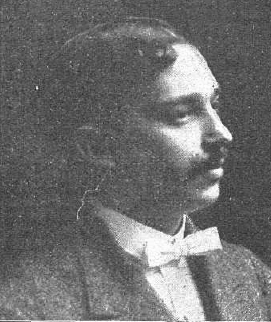K-Hito facts for kids
Quick facts for kids K-Hito |
|
|---|---|
 |
|
| Born | Ricardo García López 1890 Villanueva del Arzobispo |
| Died | 1984 Madrid |
| Nationality | Spanish |
| Area(s) | Writer, caricaturist, film producer, magazine publisher |
K-Hito was the pen name of Ricardo García López (1890–1984). He was a Spanish humorist, a person who draws funny pictures (a caricaturist), a writer about bullfighting, a movie producer, and someone who published magazines. He was part of a group of artists called the Generation of '27. K-Hito started and ran four magazines, where he created popular characters like Gutiérrez, Macaco, Currinche, and Don Turulato.
Contents
Early Life and Art
Ricardo García López was born in Villanueva del Arzobispo, a town in the Jaén Province of Spain, in 1890. He grew up in Alicante. He started drawing when he was only four years old! In Alicante, he went to the Parrilla academy to study art and also worked at a post office.
In 1907, he moved to Valencia. There, he began to work with humor magazines, drawing funny pictures and writing stories. He had his first art show in 1912 at the Círculo de Bellas Artes.
Magazines and Famous Characters
K-Hito later started his own magazine called Gutiérrez. This magazine was a bit like an early version of another famous humor magazine called La Codorniz. He also worked as the editor for children's magazines, including Macaco and Macaquete.
The magazine Macaco started in 1928 and was named after its main character. When Macaco magazine stopped being published, the Macaco comic strip moved to Macaquete magazine. In Macaquete, Macaco's adventures were told in a longer story format, rather than just short, funny drawings.
K-Hito also drew for many other newspapers and magazines. Some of these included Gracia y Justicia, Le Journal, Pinocho, ABC, Blanco y Negro, El Debate, Ya, Informaciones, and Ahora. He became very well-known for his funny drawings in the newspaper El Debate.
Producing Animated Films
In 1932, K-Hito teamed up with Joaquín Xaudaró and Antonio Got to start a company called Sociedad Española de Dibujos Animados (SEDA). This company made animated films. Sadly, most of the movies made by SEDA have been lost over time. However, a few copies of the film "Falsa noticia de fútbol" still exist today.
Life During the Spanish Civil War
During the Spanish Civil War, K-Hito lived in Valencia. He worked there as a teacher of calligraphy (the art of beautiful handwriting) at the Academia Comercial Morales. During this time, he used his real name, Ricardo García López, for his work. It was safer for him to use his real name because he had published many articles under his K-Hito pen name that made fun of the milicianos, who were anti-fascist fighters.
Later Career and Bullfighting
In 1940, K-Hito started another weekly magazine called Dígame, and he was its editor. Many famous writers and humorists worked with him at Dígame and Gutiérrez. Some of these included Enrique Jardiel Poncela, Edgar Neville, Miguel Mihura, José López Rubio, and Tono (Antonio Lara de Gavilán). He also worked with the writer Gabriel Miró.
K-Hito also had a passion for bullfighting. When he was a boy, he even wanted to be a bullfighter himself! He became a well-known bullfighting critic, writing about the events in special reports called crónicas taurinas. He is famous for helping two rival bullfighters, Manolete and Carlos Arruza, become friends. K-Hito encouraged them to hug each other in his hometown of Villanueva del Arzobispo.
Recognition and Legacy
In 1949, the town of Villanueva del Arzobispo honored K-Hito by naming him an "Adoptive Son" and even named a street after him.
K-Hito passed away in Madrid in 1984.
Filmography
K-Hito was the writer and director for all the films listed below:
- Francisca, la mujer fatal (1934)
- En los pasillos del congreso (1932)
- Falsa noticia de fútbol (1932)
- El Rata primero (1932)
- La Vampiresa Morros de Fresa (1932)
Books
K-Hito also wrote several books:
- Carmen y Raphael (1940)
- “Manolete” ya se ha muerto
- Muerto está que yo lo vi (1947)
- Yo, García (una vida vulgar) (1948)
- ¡Hasta luego! (1950)
- Anda que te anda (1954)
- El álbum de K-Hito (1973)
See also
 In Spanish: K-Hito para niños
In Spanish: K-Hito para niños

